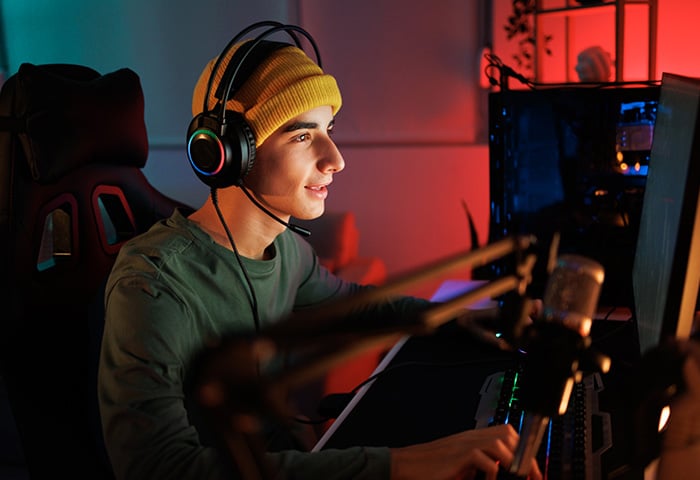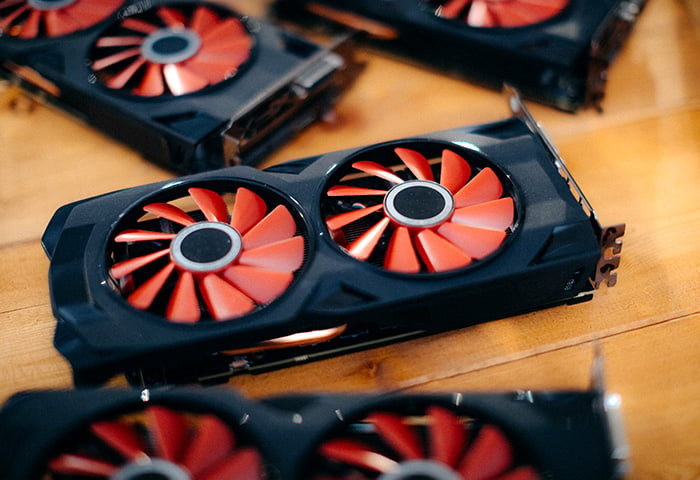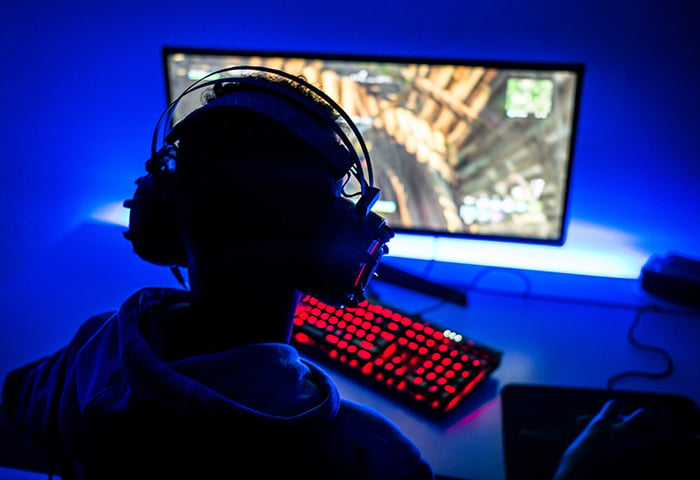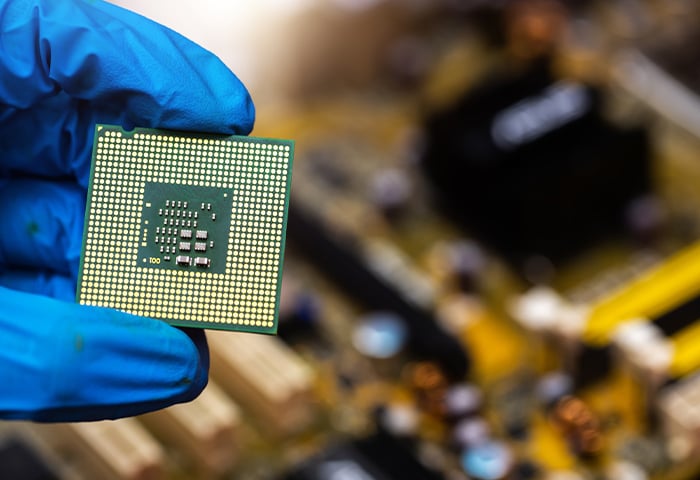We’ll show you how to optimize Windows 11 for gaming to get better FPS in popular games like Baldur’s Gate 3, GTA V, Call of Duty, Fortnite, Cyberpunk 2077, and Destiny 2, just to name a few — with great tips, downloads, and AVG TuneUp, our dedicated PC optimization software that helps boost performance and increase FPS.
But optimizing your computer is just part of the solution. Most games have tons of hidden settings that can drastically improve the way they look and feel. That’s why we’ve also looked at some of the biggest games and analyzed how to maximize their gameplay potential. Be sure to check out our in-depth guides for GTA V and Fortnite.
Now, let’s take a look at the best performance tweaks that can get your Windows desktop PC or laptop in top shape for your next gaming session.
How to boost PC gaming performance: 9 quick wins
Some of the most effective FPS boosters are also the easiest. Here are the best tricks to increase FPS on your Windows 10 gaming machine:
-
Enable Game Mode in Windows 11 and Windows 10.
-
Lower your resolution.
-
Change your game’s video settings.
-
Update your graphics card drivers.
-
Remove unused programs and bloatware.
-
Boost your Wi-Fi.
-
Adjust your monitor’s refresh rate.
-
Configure your mouse/controller settings.
-
Disable Windows Game Bar.
Click any of the links above to go directly to that section, or keep reading for more details about each technique.
1. Enable Game Mode in Windows 11 & Windows 10
Game Mode is a built-in tool designed to optimize Windows 11 for gaming — whether you’re gaming on a prehistoric museum antique or a custom-built, bleeding-edge powerhouse. Game Mode deactivates background activities like Windows updates and app notifications to help your computer boost FPS in your games.
Game Mode is usually enabled by default in the latest versions of Windows 10 and 11. Your computer should be able to detect when you’re gaming and prioritize its resources accordingly.
Here’s how to activate the dedicated Windows 11 gaming mode on your PC to get more FPS (the instructions are similar for Windows 10):
-
Open your Settings by pressing and holding the Windows key + i.

-
Select Gaming from the left menu, click Game Mode, and switch on the Game Mode toggle.

2. Lower your resolution
Unless you have a super high-end gaming PC, you may need to sacrifice some graphics for higher FPS. An average computer simply can’t run modern games at ultra-high resolutions while also putting out a constant 60 FPS.
As resolution increases, the number of pixels on your screen goes up — and so does the strain on your GPU. Lowering your game’s resolution can improve FPS by making your GPU’s job easier since it won’t have to support as many pixels with each frame. The graphics won’t look as clear, but the game should run more smoothly with tweaked display settings.
 Lowering the resolution of your game can help boost FPS.
Lowering the resolution of your game can help boost FPS.
Decreasing your resolution from 1080p (1080 x 1920) to 900p (900 x 1600) will reduce the total number of pixels by about 30%. Lowering the resolution even more to 720p will give you roughly half as many pixels as your original 1080p setting, making this tip an effective, if inelegant, FPS booster.
Find the resolution settings within your game’s options menu. Experiment to see what your machine can handle and find the optimal balance between clear graphics and better FPS for Windows 11 gaming.
 Changing your display settings can increase FPS.
Changing your display settings can increase FPS.
3. Change the game’s video settings
While you’re fiddling with your game’s resolution, tweak the other video settings as well for an additional FPS boost. Some games have simple settings that you can adjust by level: ultra, high, medium, low, and so on. Other games have sliders, numerical settings, or more nuanced controls. Experiment to see how it affects your frame rate.
Explore some of the following settings to try and get more FPS from your game.
-
Graphical details: Reduce the quality of things like shadows, lighting, textures, and reflections. Your game will look a bit less lifelike, but it should run more smoothly.
-
Anti-aliasing: Anti-aliasing smoothes out the edges of the various objects in your game. Turn it off, then slowly increase it to the point where it’s making a difference in your graphics without negatively impacting FPS. If the game offers different types of anti-aliasing, try each one and see what happens.
-
Draw distance: If you can, reduce draw distance to prevent the game from rendering far-off objects. With fewer things to render at once, your GPU can focus its available resources on your immediate environment.
-
Graphical effects: Tone down or get rid of motion blur, lens flares, and other types of graphical flare. It’s one less thing for your GPU to worry about, and it provides more room for your frame rate to improve.
-
VSync: Designed to prevent screen tearing — when your monitor shows portions of multiple frames at the same time — VSync synchronizes the game’s frame rate with the refresh rate of your monitor. It sounds helpful, and often is, but it can sometimes bring down FPS. Turn it off and see what happens. If you notice screen tearing, turn it back on.
Here’s a quick look at some of your options in Age of Empires III: Definitive Edition. Reducing some or all of these can give you a considerably better FPS in your next Windows 10 gaming session.
 Reducing video settings to boost FPS.
Reducing video settings to boost FPS.
4. Update your graphics card drivers
Your graphics card is the centerpiece of your gaming experience, but you can’t unleash its true performance without the right graphics driver. Updating your graphics card driver can be a huge FPS booster. Take a look at this recent chart from GPU manufacturer Nvidia, which shows how gaming performance improves with updated drivers.
 Updating to the latest driver boosted performance by up to 23%. Source: Nvidia
Updating to the latest driver boosted performance by up to 23%. Source: Nvidia
Not bad! It just goes to show that it pays to update.
Here’s how to update the drivers for the Nvidia GeForce, ATI Radeon, and Intel HD graphics cards:
-
Nvidia GeForce: Go to the GeForce driver website, select your graphics card and Windows version from the list, and hit the Start Search button. Drivers marked as beta aren’t quite finished, but they should all run as smoothly as the final release — and they are likely to increase FPS even more. If you have the GeForce Experience tool installed, you’ll get an automatic notification whenever Nvidia releases a new driver.
-
ATI Radeon: Go to the AMD drivers and support website and select the appropriate device. This will give you access to the latest official driver that you can download and install. You can also install the beta driver to get more performance improvements or features.
-
Intel HD Graphics: Mostly found on ultrabooks or tablets, the Intel graphics chipsets are the weakest of the bunch. We don’t recommend doing any sort of gaming on the HD 3000 or earlier, but Intel’s latest graphics chipsets can handle current games — though not at the highest possible resolution or with all the features enabled. To get updated drivers, go to the Intel Download Center’s graphics page.
 Updating drivers can lower the latency for games such as Overwatch. Source: Nvidia
Updating drivers can lower the latency for games such as Overwatch. Source: Nvidia
Regardless of which GPU you have, updating your driver should give you an immediate FPS boost and optimize Windows 11 for gaming. AVG Driver Updater automatically updates all your computer’s drivers for consistently smooth performance. When you don’t need to worry about updating your drivers, you’re free to focus on more important things — like actually playing, and dominating, your games.
How do I know what graphics card I have?
Follow these steps to find out the manufacturer and exact serial number of your graphics card:
-
Go to the Control Panel and head to Hardware and Sound.
-
Click Device Manager to bring up a list of all the built-in devices your system has.
-
Open the Display adapters drop-down category.
 This Alienware X51 gaming rig has two Nvidia Titan Xp graphics cards.
This Alienware X51 gaming rig has two Nvidia Titan Xp graphics cards.
Once you’ve identified your graphics card, make sure you’re using the latest drivers for optimal Windows 11 gaming performance.
5. Remove unused programs and bloatware
Does Windows get increasingly slower with each program you install on your PC or laptop — directly impacting all your games? This is because a lot of programs run background activities even when they’re not being used, wasting your computer’s valuable memory.
AVG TuneUp helps your computer get more FPS and prioritize its resources by removing bloatware, uninstalling programs that you don’t use, and improving the efficiency of the programs you do need. Download a free trial today.
After installing AVG TuneUp, the Unnecessary programs screen will show you all the programs you haven’t used in a while. These may range from useless bloatware to apps you installed ages ago and forgot about. Click Move to Trash next to any program to get rid of it.

Found a program you don’t need? Click Move to Trash to dump it. AVG TuneUp will remove the bloatware along with its corresponding files and caches.
But what about all those other programs you use on a regular basis that are still limiting your day-to-day performance? Our handy tool will also help you adjust your power settings. AVG TuneUp can safely put these to sleep, then wake them up when you need them. Here’s how to put unused programs to sleep with AVG TuneUp.
-
Open AVG TuneUp. On the Speed Up tile, click Details to get started.

-
On the Background & startup programs tile, click Details.

-
AVG TuneUp will show you all the programs running in the background and sucking up your computer’s resources. Click Put all to sleep to snooze them all at once, or click Sleep next to each program to snooze them one by one.

Our patented Sleep Mode technology prevents your selected programs from running in the background until you need to use them. Thanks to this performance tweak of snoozing all your heavy background tasks, your PC will run like new — meaning your games will run faster.
6. Boost your Wi-Fi
A slow internet connection can cause extra lag in games. Though it won’t affect your frame rate, boosting your Wi-Fi signal can help to reduce lag and increase gaming performance.
7. Adjust your monitor refresh rate
Achieving high FPS is useless if your monitor’s refresh rate can’t match the frame rate. To fully realize the potential of your CPU and GPU, and see that boosted FPS reflected on-screen, make sure your monitor is set up correctly.
Here’s how to adjust your monitor’s refresh rate:
-
Launch Settings from the Start menu and select System.

-
Click Display on the left, then scroll down and click Advanced display settings.

-
In the drop-down menu, select the highest refresh rate available to you.

8. Configure your mouse/controller settings
By default, mouse pointers don't register movements based solely on the distance you move your mouse, but on the speed. It’s a matter of personal preference, but most top gamers choose to disable mouse acceleration for more precise and consistent inputs.
Here’s how to turn off mouse acceleration:
-
Type “mouse settings” into the Start Menu. Click Mouse settings.

-
Click Additional mouse options.

-
Click the Pointer Options tab and uncheck the box labeled Enhance pointer precision.

9. Disable Windows Game Bar
Windows Game Bar is designed to be a convenient social media tool and performance monitor, but it also takes up resources. When getting the most out of your rig, you need control above all else. Squeezing the most out of your hardware means getting rid of anything that can affect performance, and Windows Game Bar definitely qualifies.
Disable Windows Game Bar by going to Settings > Gaming and toggling Game Bar to Off.
How to boost FPS and optimize your PC for gaming: 12 top tips
From overclocking your GPU to learning all the advanced settings tweaks, there are some powerful changes you can make to raise FPS to elite levels on your gaming PC:
-
Install an in-game FPS counter.
-
Overclock your graphics card.
-
Upgrade your graphics card.
-
Upgrade to an SSD.
-
Upgrade your computer’s RAM.
-
Disable SuperFetch and Prefetch.
-
Defrag or TRIM your disk.
-
Tweak the Nvidia Control Panel.
-
Tweak the AMD/ATI Control Center.
-
Turn on hardware-accelerated GPU scheduling.
-
Install DirectX 12 Ultimate.
-
Disable Nagle’s Algorithm.
Click any of the above links to go directly to that section, or keep reading for more details about each technique.
1. Install an in-game FPS counter
By now, you’ve spent a lot of time on all these performance tweaks to optimize your computer for gaming. It’s time to check how much you’ve actually achieved with the help of an FPS counter or benchmarking tool such as MSI Afterburner.
How to find your current FPS
Some games have a built-in FPS counter. If you use Steam, simply press Alt + Tab to enable it using the overlay. But we recommend configuring your gaming rig with the help of MSI Afterburner, which also installs RivaTuner. Here’s a helpful video to show you how it works:
What is the optimum FPS?
Many gamers would tell you that for most games to look smooth, the minimum FPS is 60. But the optimum FPS also depends on your monitor. The refresh rate for monitors is measured in Hertz. A 60Hz monitor can display 60 images per second, meaning it can display a game at 60 FPS.
Your monitor is the limiting factor here — if you optimize your game to 90 FPS, but your monitor’s refresh rate is only 60Hz, it will still show the game at only 60 FPS.
When setting up a new gaming rig, make sure you choose a monitor or laptop with higher refresh rates like 120Hz or 144Hz. You’ll get the best gaming experience with a fast refresh rate and increased FPS.
2. Overclock your graphics card
More than insufficient RAM or a struggling CPU, your graphics chip is almost always the bottleneck that causes stuttering or lackluster gameplay. To improve performance and increase FPS, push your graphics card beyond its default speed setting via overclocking.
Five to ten years ago, overclocking could potentially harm your hardware. But now, most current systems will shut themselves down before any damage happens. Besides, we’re looking at a slight GPU overclock of no more than 15% for a quick performance tweak that can significantly boost your gaming experience.
On my custom-built gaming PC, I pushed an Nvidia RTX GeForce 3090 roughly 15% above its factory clock:
 Overclocking an Nvidia RTX GeForce 3090 GPU on a custom-built gaming PC.
Overclocking an Nvidia RTX GeForce 3090 GPU on a custom-built gaming PC.
On my main laptop, a MacBook Pro with Windows 10 and a Radeon 460 Pro GPU, I’ve pushed the GPU by 100 MHz and overclocked the RAM 300 MHz.
Overclocking speeds up your GPU but also increases the stress on all of your hardware, not just the CPU or GPU — which raises your computer’s internal temperature. My desktop and laptop overclocks both increased temps by 5° Celsius — significant, but well within safe limits. Always follow safe GPU overclocking practices when trying this yourself. The same goes for overclocking your CPU — slow and steady wins the race.
Using 3DMark TimeSpy to run benchmarking tests, I determined that overclocking my system as described above yielded a 10% performance boost, from 17,018 points before the overclock to 18,591 after. Overclocking your CPU increases your FPS, so it’s definitely worth trying within safe parameters.
Want to overclock a laptop to increase FPS? That gets a bit tricky. Not many laptops support it, and you’re more likely to damage the device and components when overclocking a laptop. Make sure you have some experience before trying.
3. Upgrade your graphics card
After upgrading to a 4K projector, I noticed how my old gaming PC really couldn’t keep up with the higher resolution. While The Witcher 3 ran decently in Full HD, my two GeForce 970 graphics cards (in SLI mode) struggled with 4K, which essentially quadruples the resolution from 1080p.
Only Nvidia’s older Pascal GPU gave us the graphical power to render 4K games at a buttery-smooth 60 FPS and above. But the benchmarks don’t lie. In 2023 and beyond, you’ll need high-end GPUs like the GeForce RTX 4090 to achieve this type of performance and optimize your PC for gaming at this level. Changing the configurations will only help you so much.
If 1440p or 1080p is enough for your gaming needs, you’ll see a significant FPS boost with a much more affordable GPU. And if you’re currently building your own Windows 11 gaming PC, you can choose the perfect GPU for the way you game.
 According to Nvidia’s tests, upgrading from a GeForce RTX 3080 to a GeForce RTX 4080 significantly boosts FPS. Source: Nvidia
According to Nvidia’s tests, upgrading from a GeForce RTX 3080 to a GeForce RTX 4080 significantly boosts FPS. Source: Nvidia
4. Upgrade to an SSD
SSDs are much faster than mechanical hard disks, making them a great way to optimize your Windows 11 computer for gaming. Upgrading to an SSD (solid state drive) won’t boost your game’s frame rate, but it will speed up your computer and reduce loading times while you play.
Choose an SSD with at least 500 GB of storage, though this is more like an absolute minimum than an effective starting point. Many modern games can exceed 50 GB, and you’ll also need to allocate roughly 30 GB for Windows. And that doesn’t even include all your other files. In reality, you’ll want 1 TB or more.
I went for the 480 GB SanDisk Extreme ($395), which boasts an incredible 540 MB/s of sequential read and 460 MB/s of sequential write. The performance difference between this and my Alienware gaming rig’s stock drive is mind-blowing. Here’s one benchmark that’s easy to read:
 Upgrading to an SSD can significantly reduce loading times.
Upgrading to an SSD can significantly reduce loading times.
5. Upgrade your computer’s RAM
RAM (random access memory) is your computer’s resource pool for all current tasks. The more RAM you have, the more your computer can do at once. Upgrading your PC’s RAM will not only optimize your computer for gaming, but make it more powerful in general.
If you’re adding RAM, make sure your new RAM modules match whatever you currently have. You don’t want to mix and match RAM types. If you’re upgrading all your RAM modules to new ones, confirm which types of RAM your motherboard can support. Then, buy one or more of the same RAM module.
Adding RAM can give you a significant FPS boost, though not as much as upgrading your GPU or CPU. Still, if you can afford the new RAM, it won’t hurt.
6. Disable SuperFetch (SysMain) and Prefetch
SuperFetch (referred to as SysMain in Windows 10) and Prefetch are built-in Windows features intended to boost startup times for apps on your computer and for Windows itself. But with games, loading times and background activity actually increase when these features are enabled. Turning them off is an easy Windows 10 gaming hack. Here’s how to get better FPS this way:
Note: Please read the following instructions carefully, because deleting or changing the wrong values in the registry may cause problems with your PC.
-
Type services into the Windows search box, then select Services from the results.

-
Scroll down until you see SysMain and double-click it.

-
Choose Disabled from the Startup type options, then click Apply and OK. Close this window and the Services window when you’re finished.

-
Now, press Windows + R to bring up the Run box, type regedit, and press Enter. Press Yes to confirm.

-
Paste the following path into the address bar and press Enter:
Computer\HKEY_LOCAL_MACHINE\SYSTEM\CurrentControlSet\Control\Session Manager\Memory Management\PrefetchParameters

-
Double-click EnablePrefetcher and enter 0 (the default value is 3) to disable the Prefetcher, then click OK.

7. Defrag or optimize your disk
As data is written to or deleted from your hard disk, files become fragmented and will physically spread out all over the disk. Disk fragmentation will lead to a significant performance hit — especially with games — as the hard disk will need to collect all of the fragmented portions before it can process the entire file.
SSDs also benefit from regular cleanup with the help of a good PC cleaner tool. The TRIM function tells your SSD to erase any data blocks that aren’t being used, which speeds up read and write speeds with more efficient data management.
Games and related files take up a ton of space, especially AAA games — Baldur’s Gate 3 is just one of several recent titles asking for 150 GB of space. It’s vital that Windows can continually access all this data without having to jump around through your drive.
Whether you’re using a hard disk drive or an SSD, clean up your drive now to boost your computer and optimize Windows 11 for gaming.
-
Open the Start menu and begin typing the word defragment. Choose Defragment and Optimize Drives from the search results.

-
Select your Windows disk and click Optimize. This will either defragment your HDD or optimize your SSD via TRIM.

TRIM should be enabled by default for your SSD. But it can accidentally get switched off, which means your SSD won’t benefit from regular optimization. Here’s how to enable TRIM on your computer if necessary:
-
Open Command Prompt: Click the Start menu and type cmd into the search bar. Choose Run as administrator from the Command Prompt options and click Yes when prompted.

-
Type in the command Fsutil behavior query disabledeletenotify, and hit Enter.

-
If this returns the result = 0, as shown above, you’re good to go. Otherwise, TRIM isn’t supported and needs to be enabled. Try entering the command fsutil behavior set DisableDeleteNotify 0. If that doesn’t help, you might need to upgrade your firmware to enable TRIM.
8. Tweak the Nvidia Control Panel
All Nvidia drivers come with their own control panels that give you more power over your graphics settings and performance to optimize your PC for gaming. Go through the list of configurations and tweak them to increase FPS and find the right balance between performance and visual quality.

To get to the Nvidia Control Panel, right-click your desktop, select Nvidia Control Panel, and choose the Manage 3D Settings category on the left. These are some of the lesser-known but still important settings to tweak:
-
Maximum Pre-Rendered Frames: This controls the number of frames that the processor prepares before transferring them to the graphics card. Increasing this value results in smoother gameplay, but you may notice lag when using the mouse and keyboard. To eliminate lag, try the 1 setting.
-
Threaded Optimization: This option should always be On, because it allows the support of multi-threaded optimization for modern multi-core processors.
-
VSync: This synchronizes the frames that your graphics card renders with the refresh rate of your monitor. If you disable it, you might find that games run more smoothly, but some parts of the screen may not render correctly. Disable VSync only if your monitor has a higher frame rate than your gameplay.
9. Tweak the AMD/ATI Control Center
The AMD/ATI Control Center is another fantastic way to squeeze out more performance and increase the visual quality of your games. To fire it up, right-click your desktop, select Radeon Settings, and head over to the Gaming Settings.

From here, you can set individual graphic settings for the games you have installed. But we suggest going with the Global Settings as our recommendations usually apply to all games.
These are the most important settings:
-
Anisotropic Filtering Mode: The higher this is set, the sharper distant textures will appear — but this will also increase the processing load on your graphics card. If your GPU is powerful enough, enable it and see if it makes a difference. Use this only if your game doesn’t support changing the anisotropic filtering in its settings menu.
-
Anti-aliasing mode and method: Anti-aliasing reduces the “jaggies” around the edges of the objects in your game, and it can have a severe impact on performance. If you’re seeing shimmering or jaggies, try the Override method and select an anti-aliasing level from 2 to 8.

-
Morphological Filtering (MLAA): AMD introduced its own form of anti-aliasing that might work better and faster than other options. Try turning off the in-game anti-aliasing, as well as the standard AMD anti-aliasing, and using this instead. If it works, keep it.
-
Texture Filtering Quality: According to AMD, this feature changes texture quality. When looking up close, we couldn’t detect a difference between High and Performance, but many of the games we tested ran 1 to 5 FPS faster in Performance mode. Try it out for a small FPS boost.
-
Surface Format Optimization: This trades graphical fidelity in older games for a minor FPS increase. It won’t affect modern games, and even when I tried it on 2005’s Age of Empires III, I couldn’t detect any performance improvements. Turn it off.
-
Wait for Vertical Refresh: Vertical Sync (or VSync) synchronizes the frames rendered by your graphic card with the refresh rate of your monitor. If you disable Vsync, you might find that games run more smoothly, but doing so can also lead to graphics issues. If your monitor has a higher refresh rate than the FPS of your game, consider disabling Vsync.
10. Turn on hardware-accelerated GPU scheduling
GPU scheduling refers to the rate at which the CPU submits tasks to the GPU. You can get different results by telling the CPU to send in smaller or larger batches — or let the GPU handle some of the scheduling itself.
This feature is most helpful when the CPU is one of the weaker links in your system. But if the main bottleneck is an outdated GPU, overloading it with extra CPU commands won’t help you squeeze any extra juice out of it.
Here’s how to turn on hardware-accelerated GPU scheduling:
-
Open Windows Settings and select System.

-
Click Display, then Graphics settings, and toggle on hardware-accelerated GPU scheduling if the option’s available.

11. Install DirectX 12 Ultimate
DirectX 12 Ultimate is a software feature that enables ultra-realistic graphics effects such as raytracing. To ensure you have DirectX 12 Ultimate installed on your computer, simply update Windows normally to make sure you’re running the latest version of Windows 10 or 11. You may need to update your graphics drivers — or the GPU itself — for this install to work.
12. Disable Nagle’s Algorithm
Nagle’s algorithm alters the rate at which data is transmitted over a network by delaying data transmission until a certain amount is ready to be sent together. Disabling it ensures a constant data-flow and can contribute toward lower latency when gaming online. However, the difference is minuscule, so don’t expect this to shift the needle by much.
A note of caution before you dive in: don’t try to disable Nagle’s algorithm unless you’re an expert — errors made in the Windows Registry Editor can seriously mess up your PC.
If you’re sure you know what you’re doing, here’s how to disable Nagle’s algorithm:
-
Press the Windows key + R at the same time. Type cmd and hit enter. Then, type “ipconfig” and press enter. Find the text that says IPv4 Address and copy the address you see there.

-
Press and hold the Windows key + R once more. Type regedit and hit enter to launch Registry Editor.

-
Copy and paste \HKEY_LOCAL_MACHINE\SYSTEM\CurrentControlSet\Services\Tcpip\Parameters\Interfaces into the address bar that says “Computer” and hit the Enter key. Then, look within its subdirectories until you find the value that shows the IPaddress you found earlier.

-
Right-click the relevant directory folder, select New followed by DWORD (32-bit) value, then name the new value TcpAckFrequency and hit Enter. Then create another new DWORD (32-bit) value and name it TCPNoDelay.

-
Double-click each new DWORD (32-bit) value entry in turn. Enter 1 in the Value data field and click OK.

How to improve gaming performance on a laptop: 4 steps
If you’re a laptop gamer, you can use most of the tips above to boost FPS and optimize your laptop for gaming. While many laptops aren’t able to handle aftermarket GPU upgrades, you can enable the Windows 11 gaming mode, update your graphics drivers, and in most cases, upgrade your RAM and swap out your HDD for a blazing-fast SSD instead.
Here are a few more tips and FPS boosters to improve laptop gaming performance:
1. Optimize your power settings for performance
Maximize your laptop’s gaming performance by giving it all the power it needs to increase FPS. Optimize your power options by clicking the battery icon in the system tray and dragging the slider all the way over to Best performance. This will shorten battery life if your laptop isn’t plugged into an external power supply, but as long as you’re using one, you’ll be fine.

2. Keep your laptop cool
The hotter your laptop gets, the worse its performance becomes — a hot laptop will try to self-regulate its temperatures by slowing things down. Here’s how to keep your laptop cool for more consistent high performance and less stress on sensitive internal components:
-
Clean your laptop’s fans and vents. As dust builds up, your laptop can’t vent hot air efficiently. Physically clean your laptop regularly, and tidy the vents so it can keep itself cool. If you’re feeling brave (and don’t mind likely voiding your manufacturer’s warranty), you can open up your laptop and clean its fans directly.
-
Don’t put it on your lap. Place your laptop on a smooth, flat surface so that air can circulate underneath it. If it’s on your lap, or on a carpet or blanket, you’ll smother it.
-
Plug it in. When your laptop runs on battery power, things can get hot — especially if you’ve optimized its power settings for performance. Whenever you can, keep your laptop plugged into an external power supply.
-
Use a cooling platform. An external cooling stand blows cool air against the underside of your laptop to improve airflow, and it’ll plug right into your laptop via USB.
3. Use a performance-boosting app
There’s a whole world of software out there that’ll automatically optimize your laptop computer for top performance. AVG TuneUp lets you easily perform a number of effective performance tweaks, including snoozing background programs to free up RAM and uninstalling unnecessary software that clogs up space. Try it today to boost FPS on your gaming laptop.
4. Turn off background Windows services
Every little bit helps when it comes to increasing FPS on your gaming laptop. You can prevent apps, including Windows services, from running in the background to conserve valuable system resources and optimize your PC for gaming.
-
Open the Start menu and type the phrase background apps. Select Background apps from the results.

-
Toggle the top switch Off to prevent all apps from running in the background. Otherwise, toggle individual apps as you see fit.

Optimize your gaming PC the easy way
Even the fastest gaming computer can still benefit from further fine-tuning. Whether you’re running the latest beast or gaming on a more conventional machine, AVG TuneUp will help you scrape every last bit of performance and power from your computer.
Enjoy faster load times, more responsive gameplay, and buttery-smooth graphics with a fully efficient gaming PC. Try AVG TuneUp now with a 30-day free trial.
FAQs
How can I make my GPU run better?
Here’s how to make your GPU run better by configuring a range of settings and preferences:
-
Turn on Game Mode in Windows.
-
Enable hardware-accelerated GPU scheduling.
-
Go to Settings > Display > Graphics and ensure “High performance” is selected.
-
Use the official program associated with your graphics card: GeForce Experience for Nvidia and AMD Radeon Software for Radeon. Look up recommended settings for each type of GPU.
-
Update your GPU drivers.
-
Set your monitor’s refresh rate to the highest possible setting.
-
Change your power settings so performance is prioritized.
-
Google settings configurations for the game you’re playing.
-
Consider overclocking your GPU and CPU.
Boosting your GPU will help games like Ark: Survival Evolved and Dark Souls 3 to run more smoothly, not to mention resource-intensive juggernauts like Red Dead Redemption 2 and Cyberpunk 2077.
Why is my PC so slow?
Your PC is slow because your components aren’t powerful enough to execute the tasks you’re giving them. You might also have a problem like malware hogging your resources or a hard drive that’s too full. Optimize your machine with a PC cleaner tool and run antivirus software to speed up a slow PC.
If your computer still can’t run heavier games, look into updating drivers and overclocking the GPU next. If that doesn’t pan out, you might want to try upgrading the GPU or other ways to speed up your PC.
How do you fix lag?
You may be able to fix a laggy game by optimizing settings in Windows and your GPU to help it perform as well as possible. But when it comes to internet lag affecting your online gaming, try boosting your internet speed by freeing up bandwidth, moving closer to the router, or trying a wired Ethernet connection.
What should I upgrade on my PC for gaming?
Deciding what hardware to upgrade can be difficult, and depends on the specific system you’re currently running. But you should certainly upgrade your RAM to 16GB and switch from HDD to SSD — these are essential specs for any gaming rig these days. Beyond that, the GPU is the most likely bottleneck keeping you from running the games you want.
Is Windows 10 good for gaming?
For now, Windows 10 is perfectly fine for gaming. Windows 11 doesn’t have any exclusive must-have features and it won’t help things run much faster. More important are the GPU, CPU, RAM, and SSD.
Does RAM increase FPS?
Yes, RAM has an effect on FPS, though not as much as the GPU and CPU. 16GB RAM will be able to handle everything you throw at it. You don’t need to go any higher than that unless you’re running a lot of programs in the background.
Why is my FPS so low?
Your FPS is low because your components aren’t powerful enough, or something bad is hogging your resources. The first step in improving your FPS is doing some maintenance on your computer, like running a PC cleaner tool and antivirus. After that, you can move on to updating your drivers, adjusting power settings, and disabling unnecessary apps.
Is higher FPS better for gaming?
Yes, a high FPS is necessary for a game to look and feel like it’s playing smoothly. Generally, 60 FPS is considered the gold standard for experiencing games at their full potential. Fortunately, one of the advantages of PC gaming compared to console gaming is that it’s possible to increase FPS and speed up your computer for gaming.
Does a graphics card affect FPS?
Yes, a graphics card is the single biggest factor affecting FPS. The GPU is in charge of drawing individual frames, and those frames have an incredible amount of information in them.
If you’ve seen a GPU, you know how bulky they are. Well, all of that bulk and complexity is devoted to rendering every blade of grass, every mote of dust. And it doesn’t just create the world in front of you; it recreates it 60 times per second. No wonder they’re so huge!
What is a low FPS and what causes it?
Low FPS (frames per second) is when your game slows down because your computer doesn’t have enough power or memory to run it properly. Like movies, games are displayed on your monitor in a rapid-fire series of frames. The number of frames shown on your monitor each second is known as your frame rate and is measured in FPS — frames per second.
Most games run pretty smoothly between 30 and 60 FPS, but any lower than that and the game starts to look and feel as though it were running in slow motion. Common causes of low FPS are a weak or old graphics card, an outdated CPU, or insufficient RAM.



 Lowering the resolution of your game can help boost FPS.
Lowering the resolution of your game can help boost FPS. Changing your display settings can increase FPS.
Changing your display settings can increase FPS. Reducing video settings to boost FPS.
Reducing video settings to boost FPS. Updating to the latest driver boosted performance by up to 23%. Source: Nvidia
Updating to the latest driver boosted performance by up to 23%. Source: Nvidia Updating drivers can lower the latency for games such as Overwatch. Source: Nvidia
Updating drivers can lower the latency for games such as Overwatch. Source: Nvidia This Alienware X51 gaming rig has two Nvidia Titan Xp graphics cards.
This Alienware X51 gaming rig has two Nvidia Titan Xp graphics cards.









 Overclocking an Nvidia RTX GeForce 3090 GPU on a custom-built gaming PC.
Overclocking an Nvidia RTX GeForce 3090 GPU on a custom-built gaming PC. According to Nvidia’s tests, upgrading from a GeForce RTX 3080 to a GeForce RTX 4080 significantly boosts FPS. Source: Nvidia
According to Nvidia’s tests, upgrading from a GeForce RTX 3080 to a GeForce RTX 4080 significantly boosts FPS. Source: Nvidia Upgrading to an SSD can significantly reduce loading times.
Upgrading to an SSD can significantly reduce loading times.































